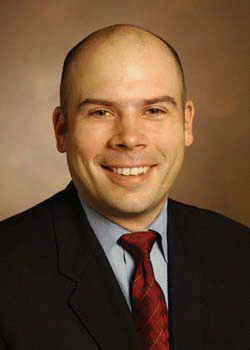Titanium and Shape-Memory Materials
Since then, the field has progressed to such innovations as titanium and shaped memory implants, and research on diode laser soldering has continued.
In separate interviews, leading experts discussed their own views regarding the innovations that are shaping the future of middle ear reconstruction.
The newest innovation is the use of stapes titanium implants, said Frank M. Warren, MD, Assistant Professor of Otolaryngology at the University of Utah. The hearing results are very good. Another advantage of titanium is that it is not ferromagnetic, and therefore not affected by a magnetic resonance imaging [MRI] magnet. Therefore, patients who have such implants could subsequently undergo an MRI scan without concern that the prosthesis would interfere with the scan. Titanium is also highly biocompatible and therefore associated with a lower extrusion rate than earlier materials used. It is also effective in closing air-bone gaps and is mechanically sounder and less top-heavy than other prostheses, he said.
Some bridge the gap between the malleus and stapes, and others between a necrosed incus and the stapes superstructure. These prostheses are geometrically complex to allow for the misalignment of the structures, and crimp in order to make the bridge possible.
However, Dr. Warren cautioned that the routine use of cartilage to cover the prosthesis and prevent extrusion is still necessary.
Paul R. Lambert, MD, Professor and Chair of Otolaryngology-Head and Neck Surgery at the Medical University of South Carolina in Charleston, agreed with Dr. Warren regarding the impact of titanium implants on the progress in middle ear reconstruction. He called it an ideal ear bone replacement medium for the middle ear, and elaborated on this statement.
The use of titanium implants is the most significant advance in ossicular reconstruction in the last 20 years, he said. Especially, those used as partial or total ossicular replacement prostheses have been important. In my years of otologic work, I’ve used a number of different materials. I began using titanium implants in 2003. I’ve only seen one extrusion in those years.
As did Dr. Warren, Dr. Lambert stressed the biocompatibility of titanium. Another advantage is the lightness of the material, he added. This property makes titanium implants very easy to position, he said. They’re very lightweight, very easy to position, and more secure. We see less displacement of prostheses. We also see better hearing results. Titanium has a hearing improvement of approximately 10 dB compared with other prostheses, he said.

Leave a Reply